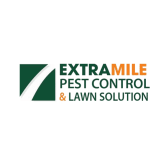Recap of September 2024 First Friday with Florida First Detector
This webinar kicks off our third year of First Friday with Florida First Detector! In honor of another year, we went back to the basics on invasive species. For anyone new to the series, this is a great place to start. For others, this is an awesome refresher on the who, what, when where, why of invasive species.
So, what is an invasive species? It is any species that is non-native and causes damage of some kind. Non-native means that it is a species that is not originally from that location. Since we live in an increasingly globalized world, we see not only people, but also lots of creatures moving around the world at a rate higher than ever before. For a non-native species to be considered invasive, it causes issues for humans. These issues or damage can be economic losses in agriculture or horticulture, negative impacts on local ecosystems, or harm to human or animal health.
For example, the Caribbean fruit fly, Anastrepha suspensa, is an invasive species first found in Florida in the 1960’s. Since its establishment in Florida, this species has had a significant economic impact on fruit production in Florida. It has caused management problems for farmers, impacted home gardens, and even disrupted trade of certain agricultural products.
Florida is a high risk state for the introduction of invasive species. For similar reasons that many tourists visit Florida each year, lots of pests and pathogens thrive in Florida’s diverse climate zones and mild winters. We also have many points of entry like international deep water ports and airports that bring people and goods to the state every year, carrying with them potential invasive species as hitchhikers.
While there are many organizations that work on invasive species, everyone can help stop the spread of invasive species. First of all, you can be careful not to move invasive pests around. If you are traveling, avoid taking plants, plant materials or fresh fruits and veggies, unless they have been properly inspected. If you work in agriculture or horticulture, make sure any plant materials you purchase are properly inspected and pest free before bringing them to your farm or operation.
For anyone who is out working with plants regularly, be on the lookout for pests you have never seen before or unusual damage to plants. One of the goals with our First Fridays program is to help you all become better detectives for invasive species in your area. The webinars provide information about different invasive pests relative to Florida. We often talk about how to identify things that could be a risk for Florida. If you find something you don’t recognize, submit a sample for identification. You just might be the first person to find a new pest in your area!
Resources on Invasive Species
Florida Invasive Species Council
Cooperative Invasive Species Management Areas
Cooperative Agricultural Pest Survey
National Plant Diagnostic Network
National Invasive Species Information Center
Protect U.S.
UF IFAS Assessment of Non-native Plants in Florida’s Natural Areas
Want to watch the recording?
What is the upcoming schedule?
We are meeting online via Zoom from 12:00PM-1:00PM on the First Friday of every month from Sept 2022-Aug 2025. Maybe longer too! Please visit this blog for registration information and the upcoming schedule for Sept. 2024-2025.
Questions?
Contact Dr. Morgan Pinkerton, morgan0402@ufl.edu
Or
Visit the Florida First Detector Website
The post September 2024 First Friday with Florida First Detector appeared first on UF/IFAS Pest Alert.
Recap of September 2024 First Friday with Florida First Detector This webinar kicks off our third year of First Friday with Florida First Detector! In honor of another year, we went back to the basics on invasive species. For anyone new to the series, this is a great place to start. For others, this is
The post September 2024 First Friday with Florida First Detector appeared first on UF/IFAS Pest Alert.
—
Source: UF/IFAS Pest Alert
From: Read More



